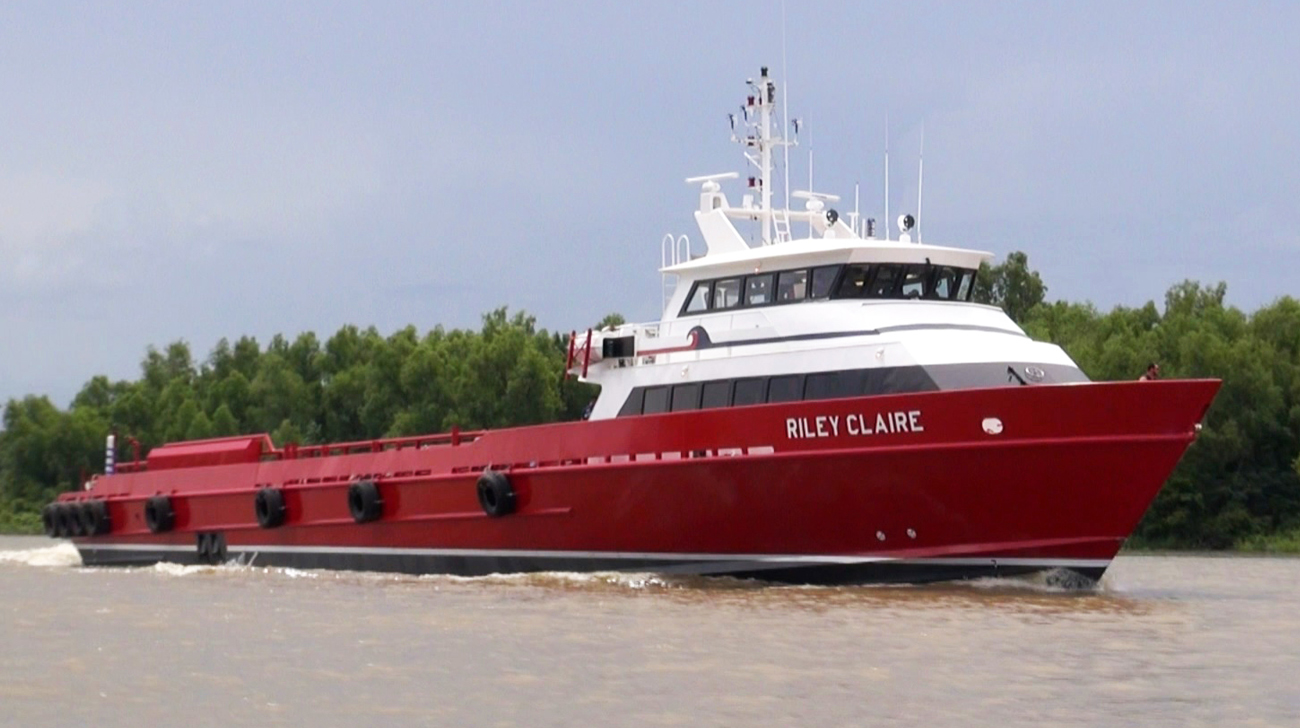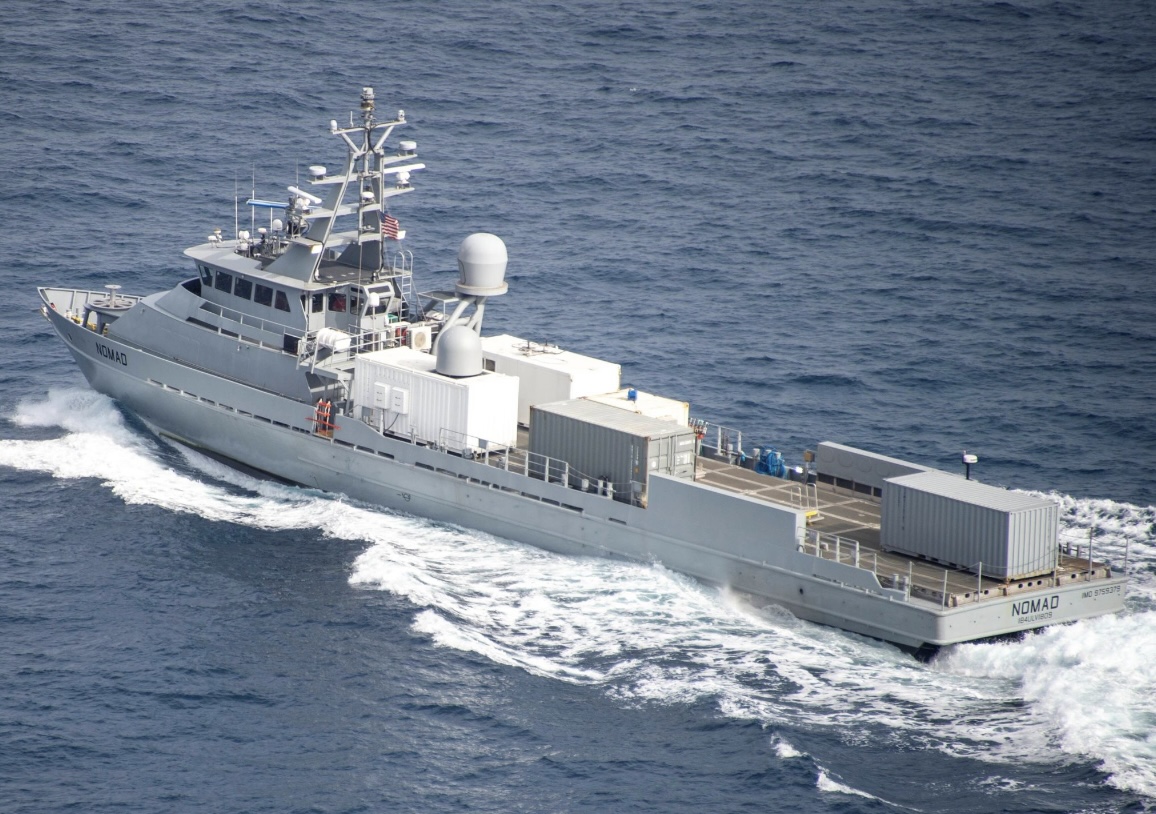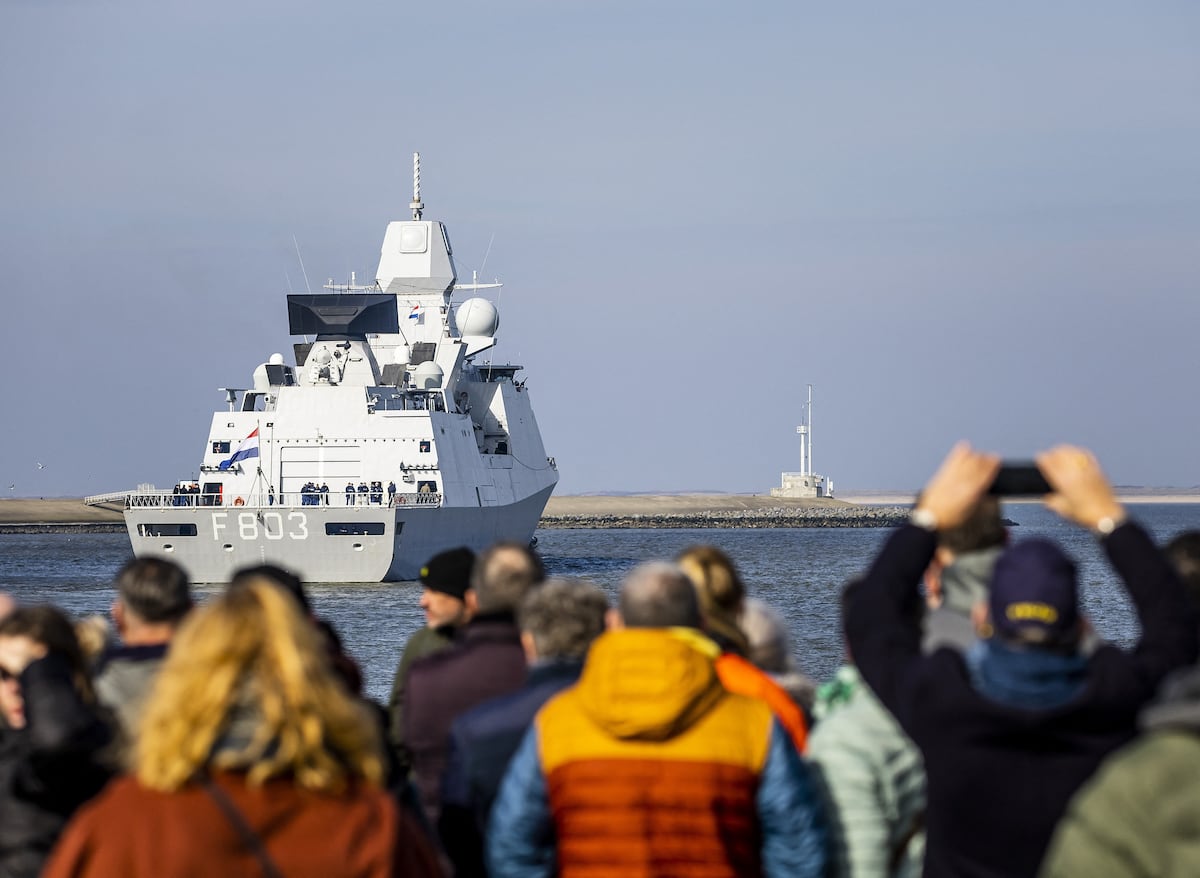I see absolutely no way that the requested specs can fit in a vessel of 1,000 tons. Looking at existing Corvette designs that have specs approaching what they are looking for they all fall more into the 2,500 ton range...and the crews are 100+ not 40, especially if you're embarking UAV's, etc.
I don't think you are fully appreciating the effects of containerization. Container vessels, which are also required to be stable in high sea states, are often quite light. The AOPS is the low end of a continuing trend. The stern can carry a small number of containers. The MMCV concepts are showing more area, after the fashion of the OSVs like HMCS Anticosti, that can accommodate more containers.
And crews of 40 or so are quite realistic..... especially for a Navy that is constantly complaining it doesn't have enough sailors and it wants more hulls.
Would be more realistic to have an up-gunned OPV with the required sensors and a more limited self-defence weapons suite and have the strike-length VLS tubes in a separate arsenal ship that can be paired with the OPV to create the AAD region when required?
No. The Concept of Operations would be compatible with a constabulary platform operating in the EEZ under the auspices of NORAD/NORTHCOM. Keeping missiles on the vessel that do not belong to the vessel but are launched by NORAD would be as workable as it would for an Air or Coastal Defence Battery on shore.
So a small flotilla that can sail up the St Lawrence maybe all the way up the Ottawa to let folks sleep at night
Except that the ship doesn't need to sail up to Ottawa if the primary weapon system is mounted in containers and can be trucked to Ottawa.
Again, question for everyone thinking we'll get MCDV replacements, where are the sailors coming from, when the RCN is shrinking and we don't have enough for the new ships and subs on the books without a massive growth?
Putting money towards new platforms but not addressing our recruiting shortfall, retetntion, lack of training facilities/throughput and overstreched support arm doesn't deliver any effective capability.
Again - roll over and think of England and accept that you will be crewing vessels with much smaller complements. It is easier than fighting for the nigh impossible.
Lack of a mission deck kills any competitor before it can get off the ground.
Couldn't that aft end be reconfigured? Get rid of the helideck and the stern launch ramps, and leave the stern looking more like an OSV or perhaps the VARD MMCV concept.
Just a note on crewing of that Swift ship corvette, and displacement.
The vessel can accommodate 79 personnel - 33 pairs of muddy boots and an aviation det of 6 plus
a crew of 40.
The vessel has a displacement of 1250 Long Tons or 1270 tonnes and a speed of 29 knots
The Riley Claire, the 53m autonomous OSV employed by the USN as the USS Nomad, built by the same company, had a deck capacity of 200 Long Tons. And an SM6 was launched from a 40 foot container on that deck. The vessel was sound enough to complete a trans-Pacific passage while minimally crewed / optionally crewed.
Why not look at a 1000 Tonne vessel with a 200 to 300 Tonne deck capacity for containers? A constabulary vessel that can operate in disaster relief and which can also stand in as an artillery platform to support the NORAD/NORTHCOM missions.
[td]ACCOMMODATIONS[/td] [td]
- 1 x 1 CO Cabin
- 1 x 1 Flag Officer Cabin
- 6 x 2 Officer Cabin
- 1 x 6 Aviation Pilots Cabin
- 2 x 4 Petty Officer Cabin
- 1 x 18 Crew Quarter
- 1 x 18 Troops Quarter
- 1 x 15 Troops Quarter
- Total Capacity: 79 Persons
[/td]
Builder: Swiftships Designer: Swiftships Owner: Rodi Marine Inc. Mission: Carry passengers and cargo to and from offshore structures in the Gulf of Mexico. Length: 175' Beam: 25' Depth (molded): 13'

www.workboat.com

swiftships.com
Play Video Video Source: US Navy Ghost Fleet: The Unmanned Surface Vessel Nomad (aka Riley Claire) The Swiftships’ built vessel Riley Claire (aka Nomad), participates in Rim of the Pacific (RIMPAC) 2022. The large unmanned surface vessel “Nomad” is part of the new Unmanned Surface Vessel...

swiftships.com
....
Keep in mind the Dutch using autonomous OSVs similar to the Riley Claire to supplement their Seven Provinces ADFs.

The vessels will have a length of about 53 meters and a beam of 9.8 meters, for a displacement of 550 tons, a MoD spokesman told Defense News.
The service’s air-defense frigates will continue to be equipped with RTX’s SM-2 surface-to-air missile, and the frigate’s radar and fire-control systems will handle launch and targeting for the missiles on the support vessels.
The support ships will each have a crew of at least eight sailors. While current technology isn’t sufficiently mature for fully autonomous vessels, the new ships will provide the Navy with experience in operating with small crews, as a first step toward unmanned vessels, Tuinman said.
The Barak ER air-defense missile that will equip the support ships has a range of up to 150 kilometers and can target anything from fighters to tactical ballistic missiles and glide bombs, with eight missiles packed in a vertical launcher, according to the company’s spec sheet.
The Netherlands plans to buy
two support vessels that will act as sidekicks to its air-defense frigates, packing additional missiles to defeat swarms of anti-ship missiles and drones, for an investment in the range of
€250 million to €1 billion (US$279 million to $1.1 billion).
The support vessels will also be able to provide fire support for amphibious operations using
long-range loitering munitions, as well as equip
underwater drones to track and identify suspicious activity in the North Sea, Dutch State Secretary for Defence Gijs Tuinman said in a
letter to parliament on Tuesday.
Dutch shipyard Damen will build the vessels, with Israel Aerospace Industries supplying interceptors, drones and electronic-warfare equipment.

www.defensenews.com






